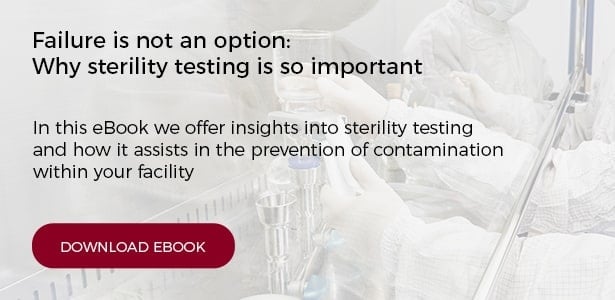How modern microbial air samplers can be traced back to the 19th century
Microbial air sampling within the pharmaceutical and associated industries has become a vitally important tool within GMP manufacturing. The instruments available today are varied in both size and style, but most employ a very old technique – that is impaction, into or onto, a collection medium. Which got me thinking, where do they originate from?
Impactor style air samplers first appeared in the 19th century and were almost entirely used in research applications to collect dust and other airborne particulates. At this time collecting bacteria was not a primary concern as scientists were more interested in the effects of airborne contamination on individuals. The industrial revolution was gaining pace and as a result contamination of the air increased.
A fascinating paper by Virgil A. Marple titled ‘History of Impactors – the first 110 years,’ looked at the development of these samplers in some detail. In Marple’s paper, the simple technique of accelerating an air stream through an orifice onto an impaction plate is attributed to Pouchet in 1860. During the rest of the century little development took place. In the early 20th century, cone collectors and impingers appeared, but it was not until the cascade impactor was developed in the 1940’s that microbial air sampling really started growing.
The May cascade impactor was originally developed for military applications, so it was robust to say the least! The Andersen multi-stage impactor took the technology to another level as it was able to grade by particle size. Initially developed for assessing size distribution of viable particles in the 1950’s, the Andersen became the base for the modern microbial sieve samplers of today. At the same time, Bourdillon et al developed a slit sampling technique under a moving plate. This is the basis for the Casella slit to agar sampler which appeared in the 1960’s.
The Casella was really the first commercially available microbial air sampler. The two piece unit housed a pump and sample collection unit. The air was passed through 4 slits onto a 150mm Petri dish. It was widely used within hospitals for monitoring theatres, and some still remain hidden away. However, it was large and unwieldy, plus difficult to clean down.
The slit-to-agar technique was seen as efficient and new instruments soon appeared. Also from the USA, the Mattson-Garvin instrument was also developed in the 1960’s, but it was a single self-contained instrument, so easier to clean. This was important as a growing demand within pharma for environmental monitoring was starting to happen.
The 1980’s saw an influx of new impactors, but using the sieve method as seen in the Andersen cascade sampler. The SAS sampler is in essence a single stage sieve, or multi point impaction sampler, but due to the technology a more compact solution to slit-to-agar. Pharma’s need for portable instruments to take to multiple sampling locations meant the SAS and other similar instruments grew rapidly in popularity.
Despite the rise of the popular portable instruments, slit-to-agar sampling has never gone away. The Airtrace instrument appeared in the 1990’s and was a modern, sophisticated alternative to the older style Mattson-Garvin. More importantly it was the first unit to really emphasise the importance of impaction methodology in determining a d50 value, in essence the efficiency of the sampler to collect airborne particulates.
The Airtrace was recently withdrawn from sale to be superseded by the ImpactAir. The British designed and built instrument is very much fit for demands of the 21st century. Whilst the stainless steel construction is very cleanroom compatible, at its heart is an impaction sampling method using a highly efficient slit to propel airborne particulates onto an agar plate.
SAS and all other microbial air samplers owe their development to a 19th century technique, with a liberal dose of 21st century design and engineering of course!

NEW! Revised Environmental Monitoring Process and Validation Guide
How are you going to meet the challenge of the new EU GMP Annex 1?
Our revised and updated guide helps highlight decisions and actions to ensure you remain compliant.





